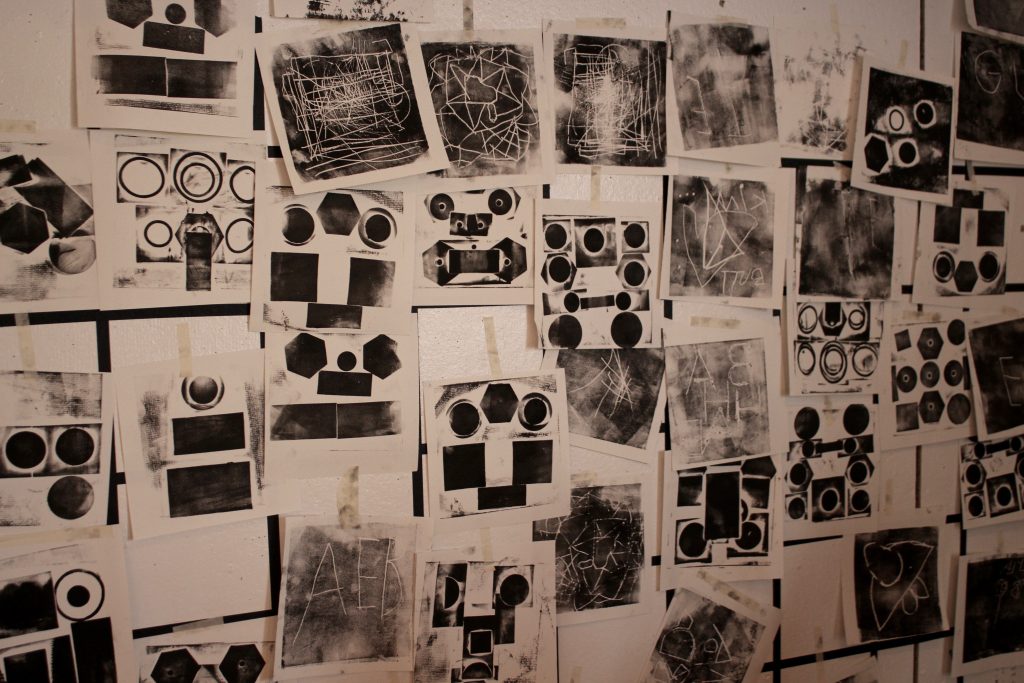We have introduced some new tools to engage in the process of printing! Presented with these new materials, children are challenged to apply their experimentation, questioning and problem-solving tools to a new process. They joyfully envision what these tools might be for, making predictions and then testing their theories.
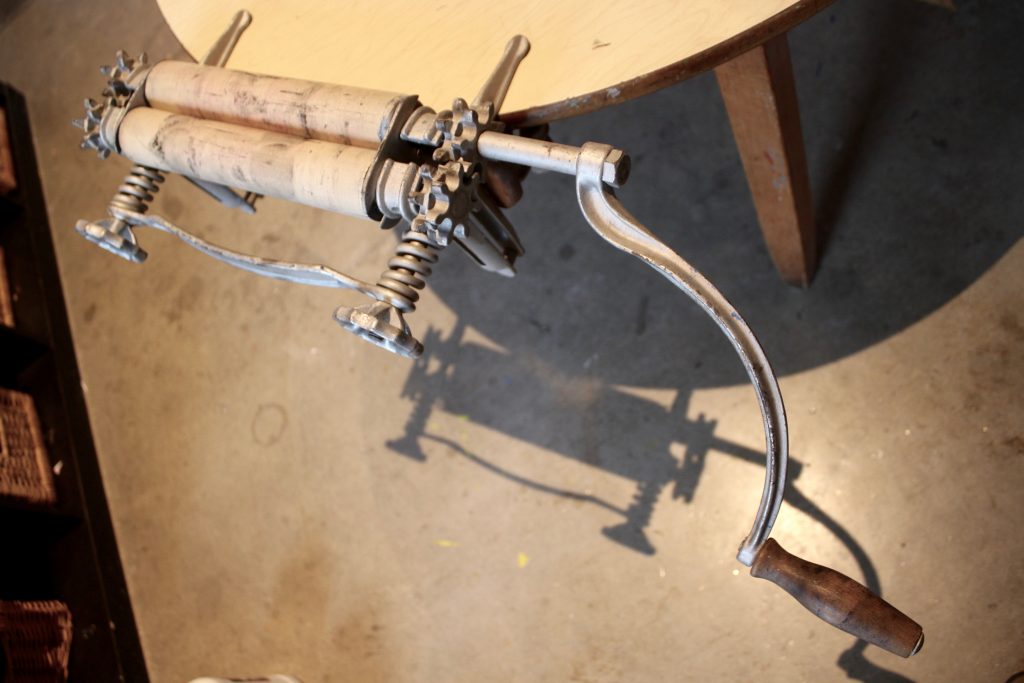
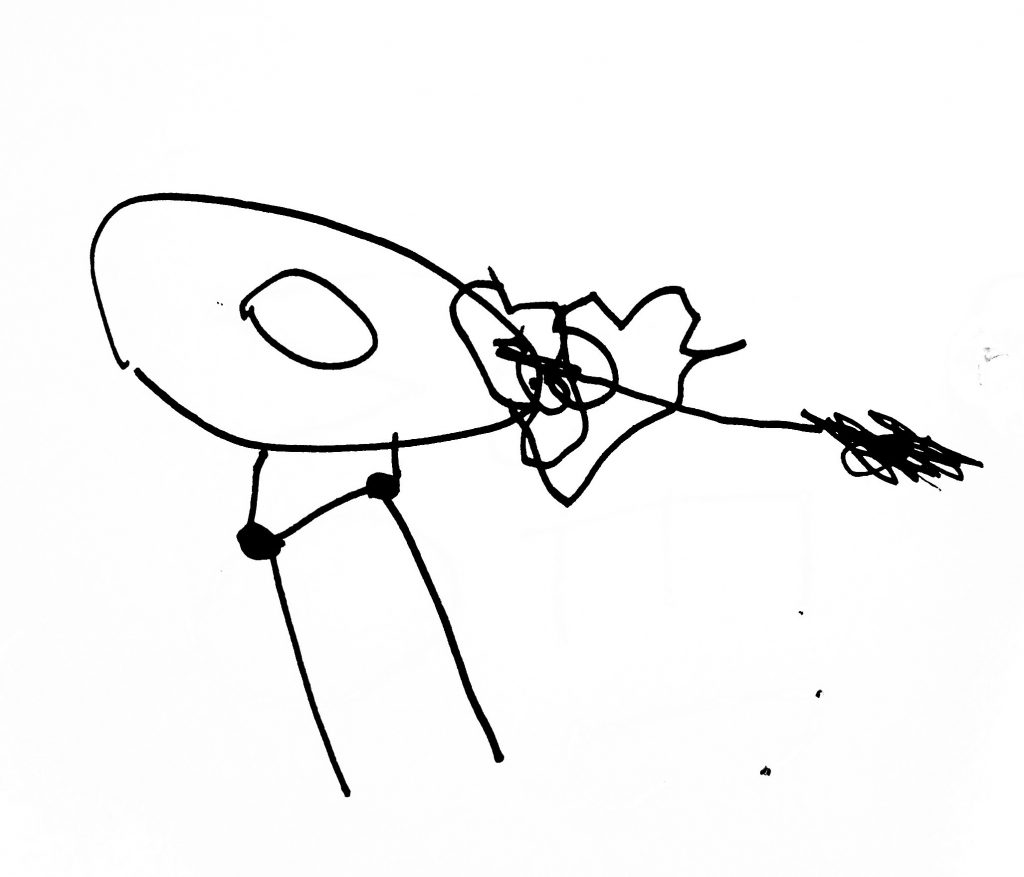
See how there’s gears? On the side. On each side and on the other spool it makes it turn. The gears touch together. It makes the other side turn. Graeme
I think you could put paint on the rollers and put a paper through and paint. It would make the paper a color. Maren
Maybe they could hold it up. How could it stand up? I think those are to help hold it up or it will fall. Arya
I’m seeing a wooden board behind the roller. If those things (screws) weren’t there the wooden board would hold it up. Vivian
I see these loosen and tighten it. Then I turn the know and it’s harder to turn. If I loosen it, it is
easier to turn (the crank). Birdie
I can see some words…. and numbers. I see some stars and letters and words. Zaahra
It’s basically, if you turn those bolts at the same time it gets harder to do. Paper goes through it and
then it gets really hard. Jane
It makes your muscles stronger! Arya
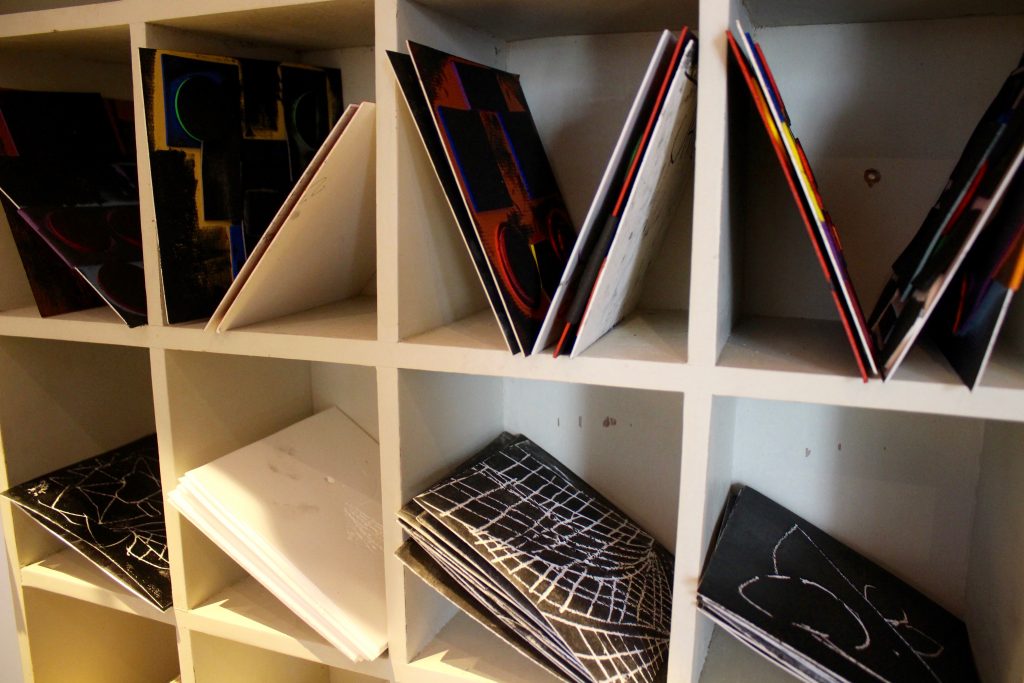
Children begin to help others understand the tools we are using to print. They begin teaching their peers about their own processes, what they have learned through their interactions with these materials and those around them who are engaged in the work too.
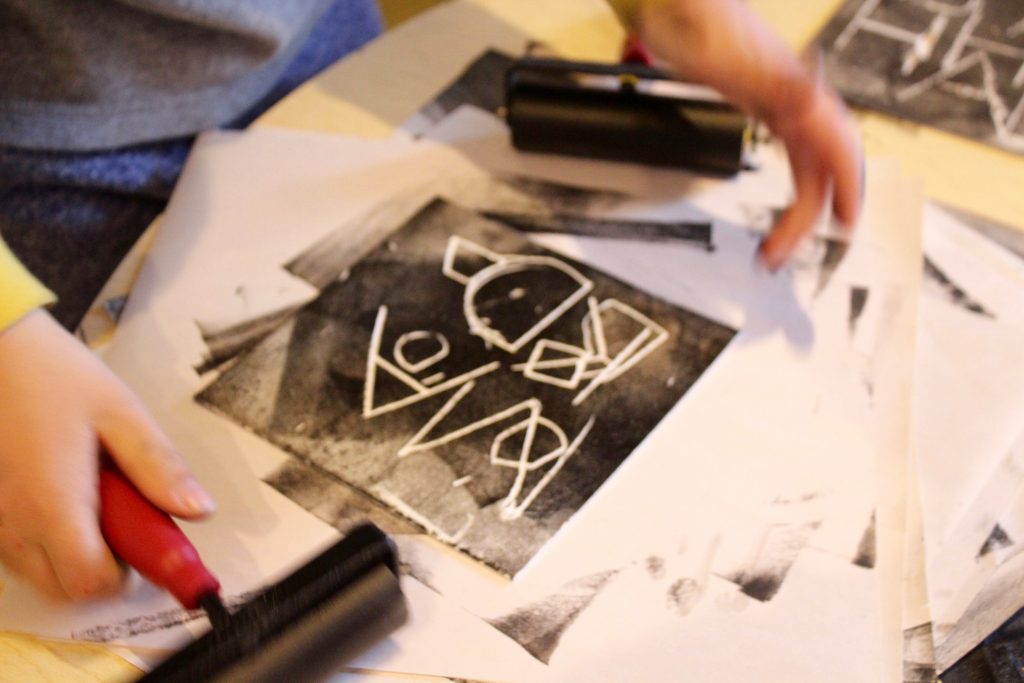
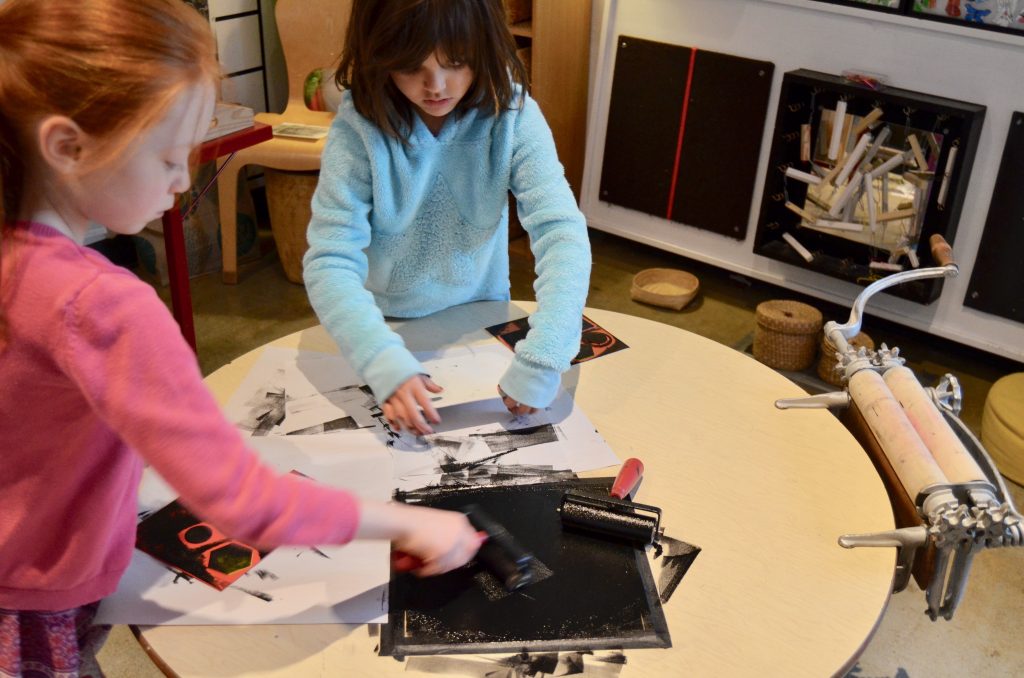
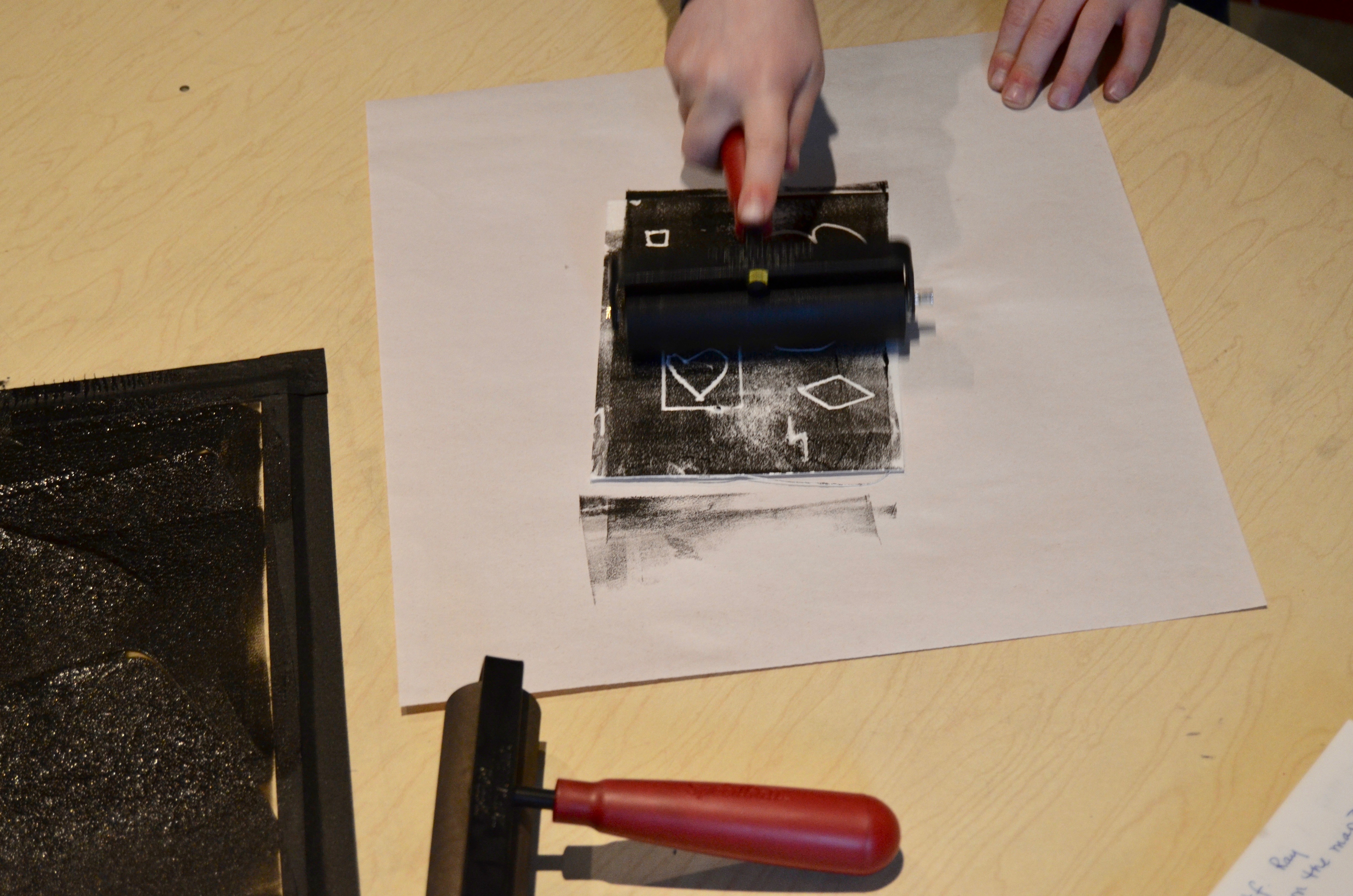
Don’t just go in one direction. Birdie explains to Zaahra as she rolls the ink.
You have to press it down a little bit so it sticks.
I like to watch it [go through the wringer]…
You roll it on here. See what I did, Charlotte?
Because the paper was white. When you roll it, it doesn’t go.
I notice there’s a bump so the ink might not go around (the foam shape). You can’t really get where it is.
Birdie
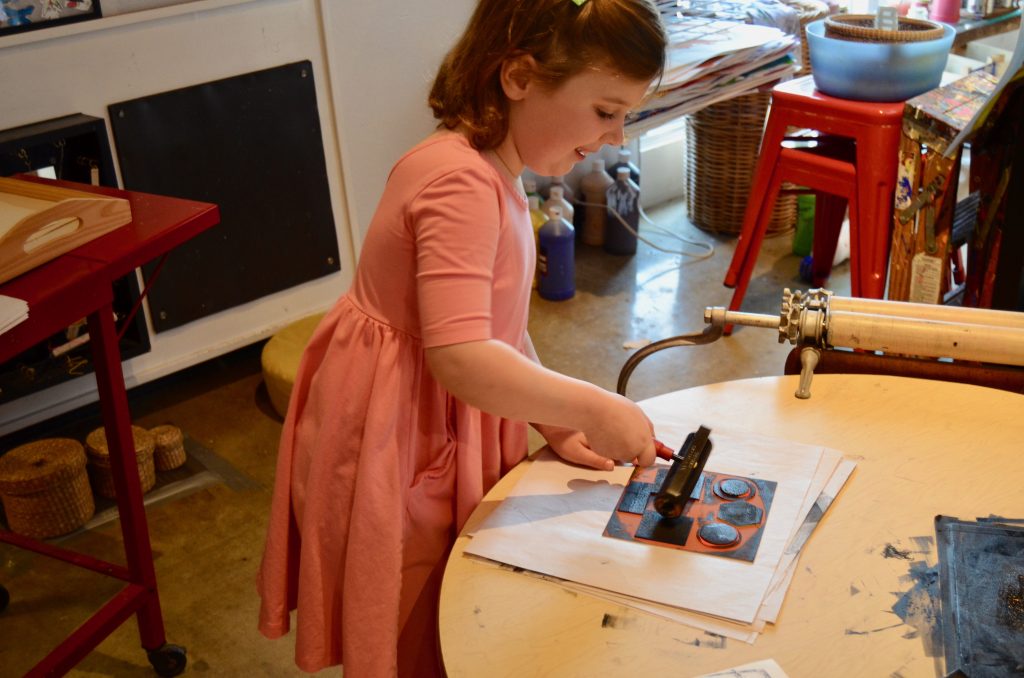
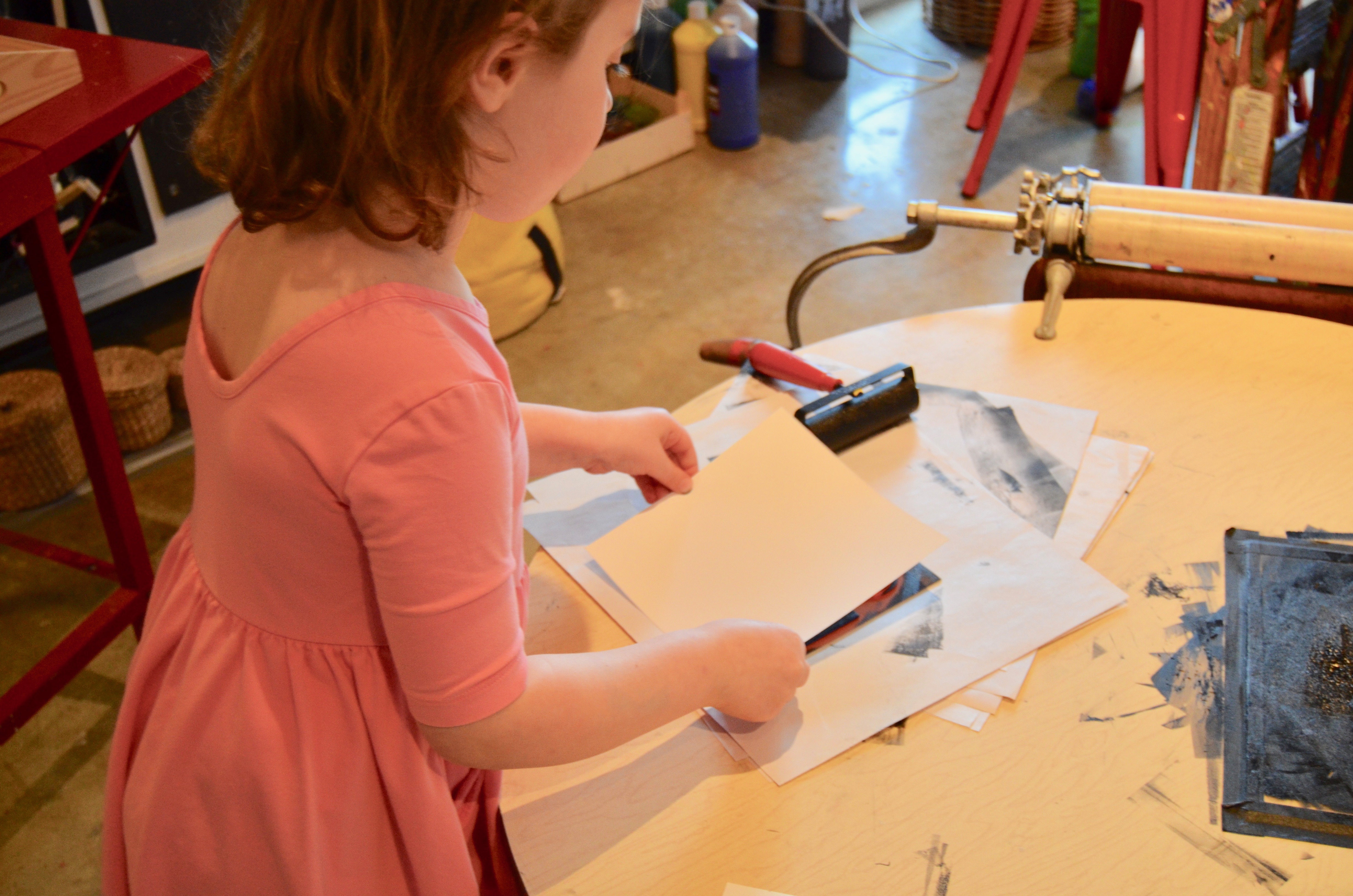
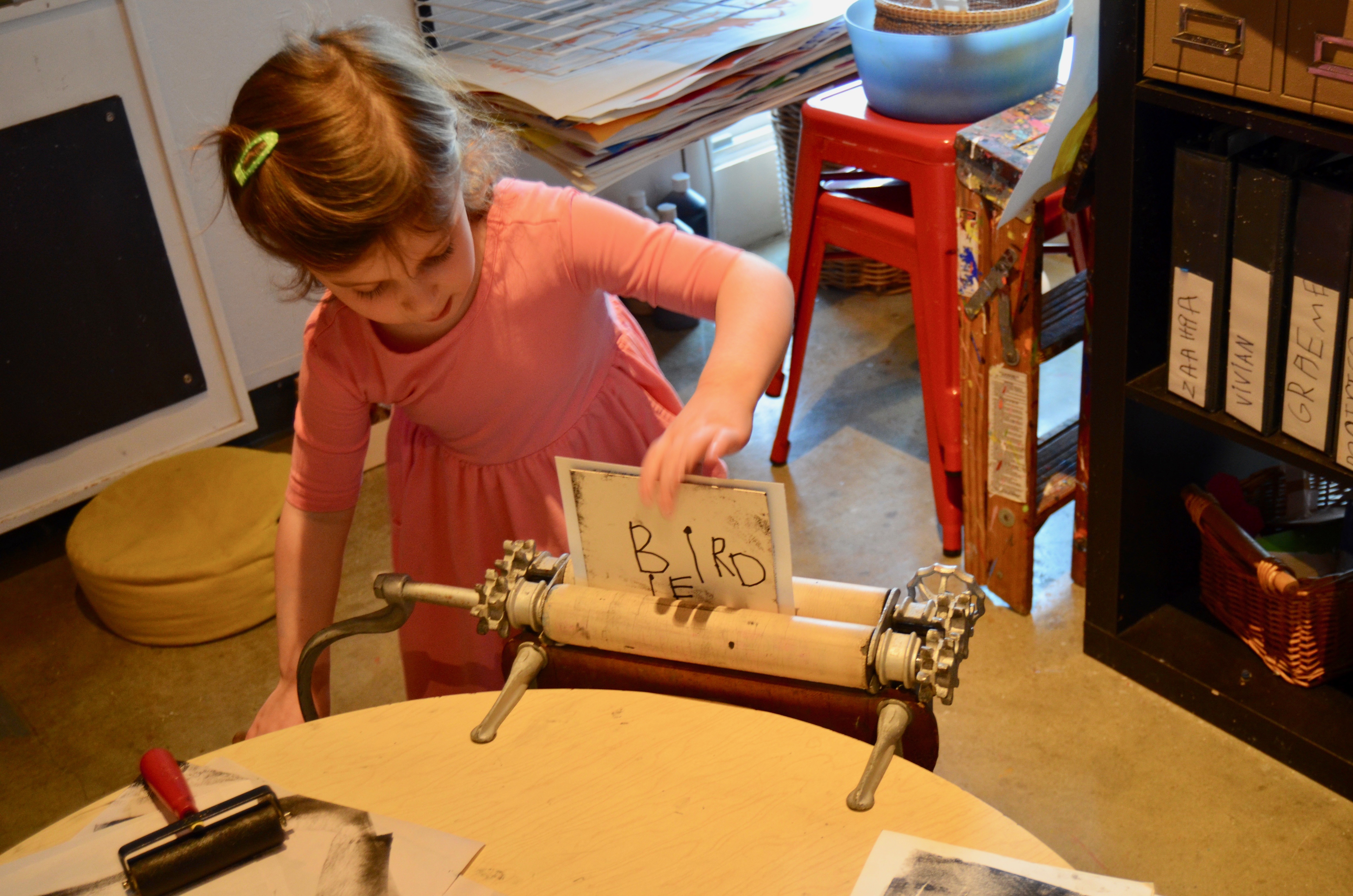
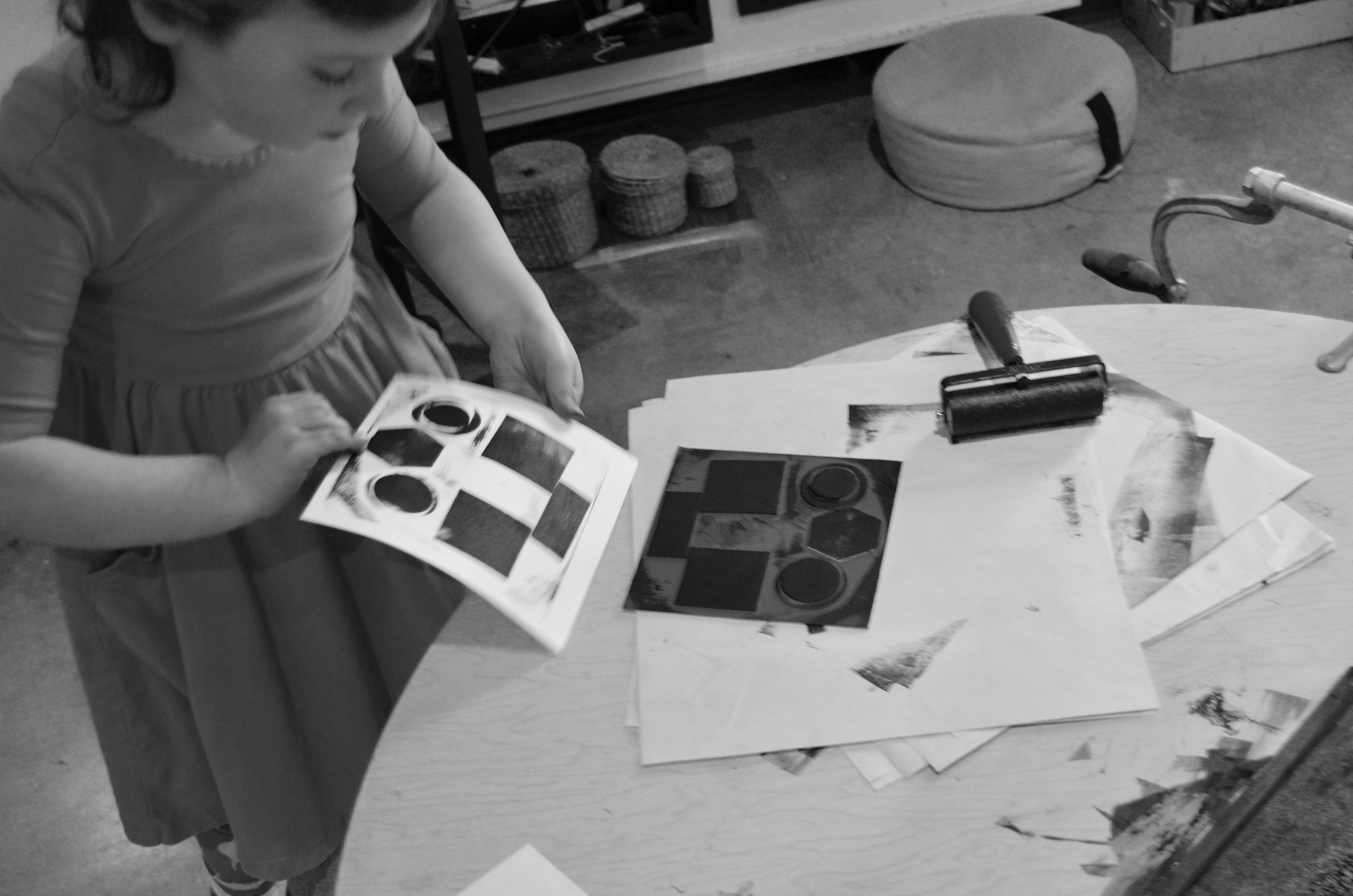
As children make discoveries, they ask new questions. With unexpected results — some fun surprises, others disappointments — they seek new ways to fulfill the visions they have created for their prints.
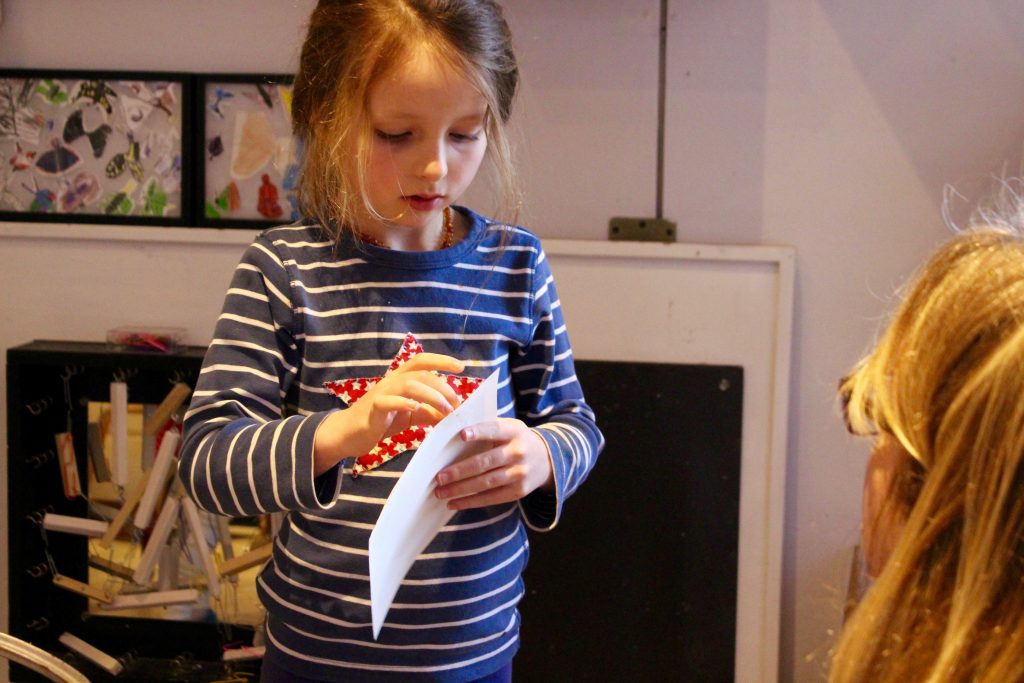
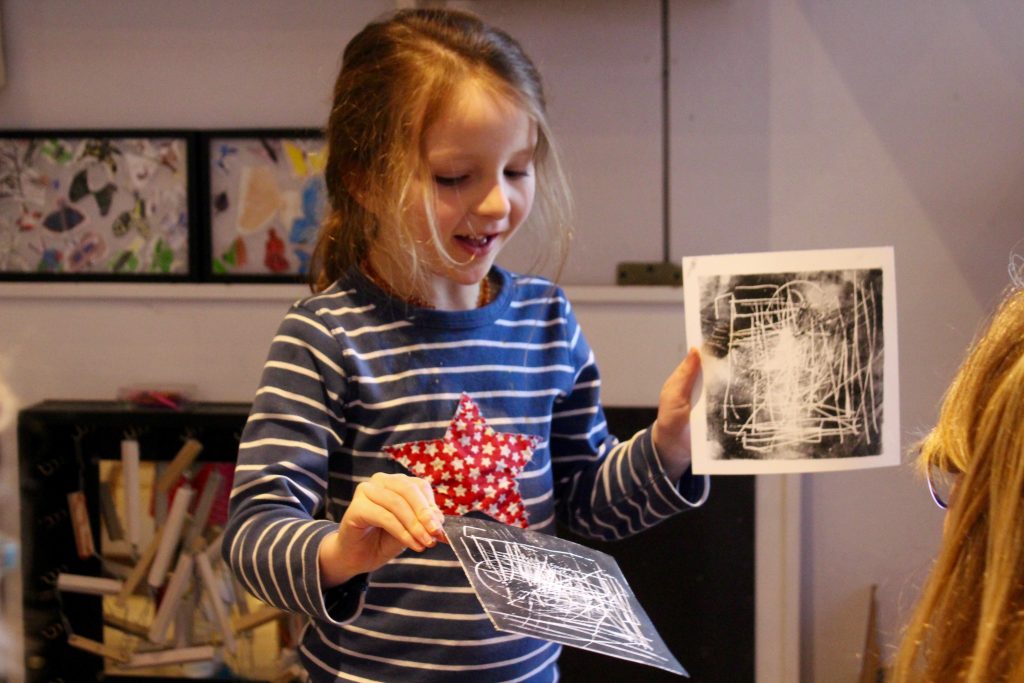
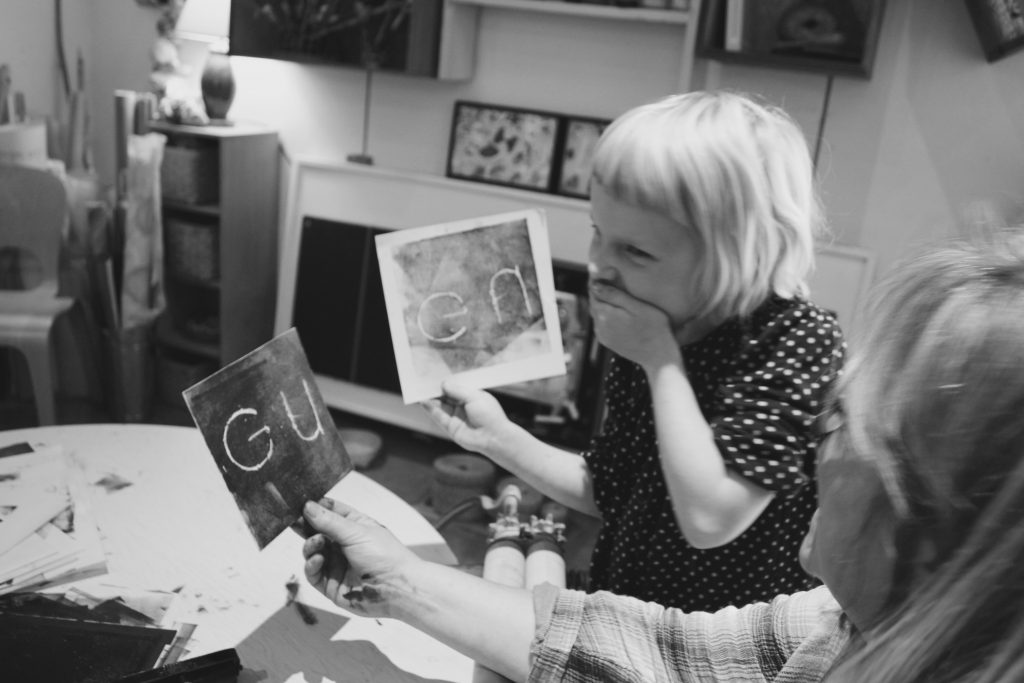
Beatrice and Arya are printing plates with letters and writing and notice the letters don’t look quite right…
Beatrice: The B is backwards…
Arya: Graeme is backwards
Beatrice looks closely.
Beatrice: It prints everything backwards.
Why does that happen?
Arya: Look what happens when my hands do this.
She puts her hands palms together and then opens them like a book, the thumbs still touching. She doesn’t describe what she is demonstrating. Grishma does the same demonstration with Arya and Beatrice.
Arya: It’s symmetry!
Bea picks up the plate she made etched with GU.
What do you think will happen when you print this?
Beatrice: UG.
She makes the print and examines it, turning it around in her hands.
Beatrice: It is UG and backwards! She takes the plates – At least these are still right and correct!
Oh, this one is right.
You have to do everything backwards for it to turn out the right way.
Beatrice
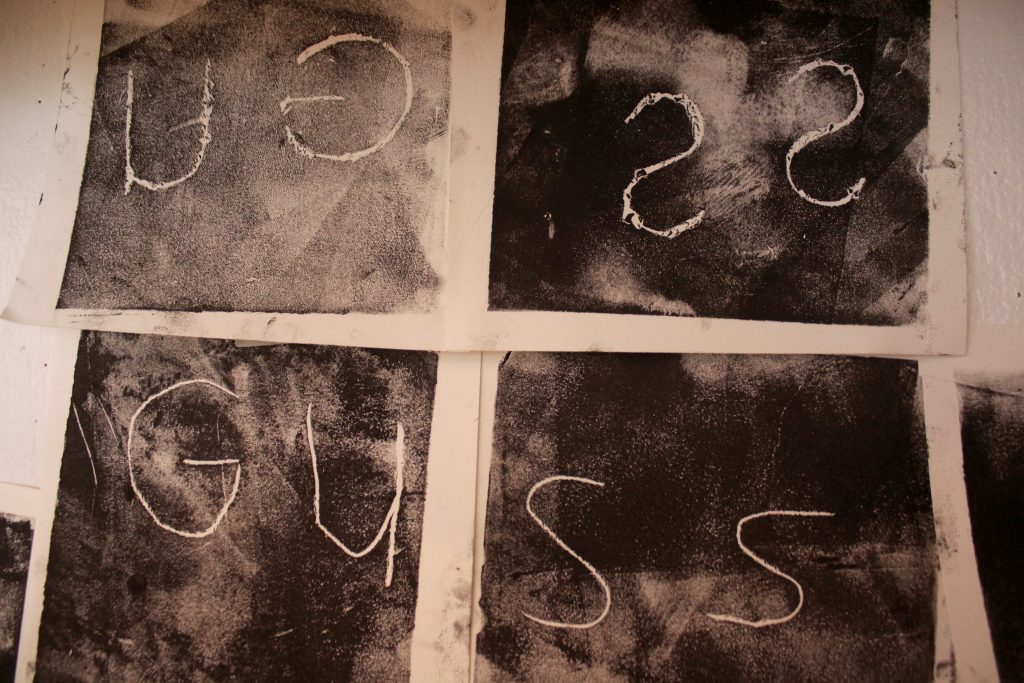
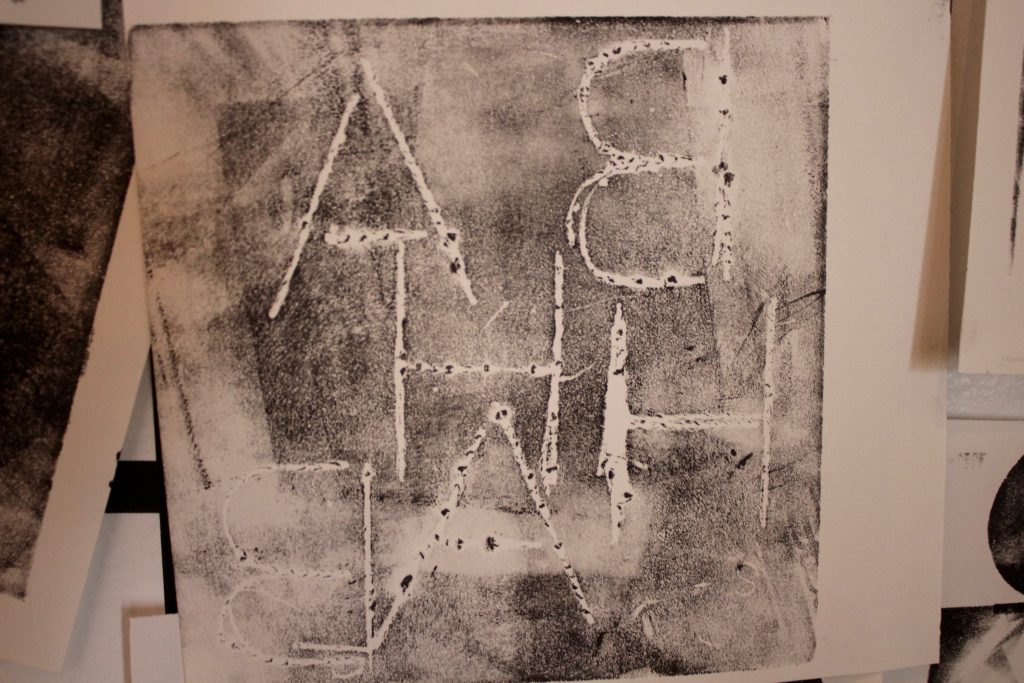
Jane, looking at her print—This happened! I can’t see this part!
Why might that be?
Some of the ink is not showing…I didn’t use enough ink…or I didn’t press very hard (with the brayer).
When you print you can make more than one copy.
Would you like to do that?
What would you change?
I’d like to put a little more ink.
She reinks her plate and prints another copy.
It is a little bit much more darker!
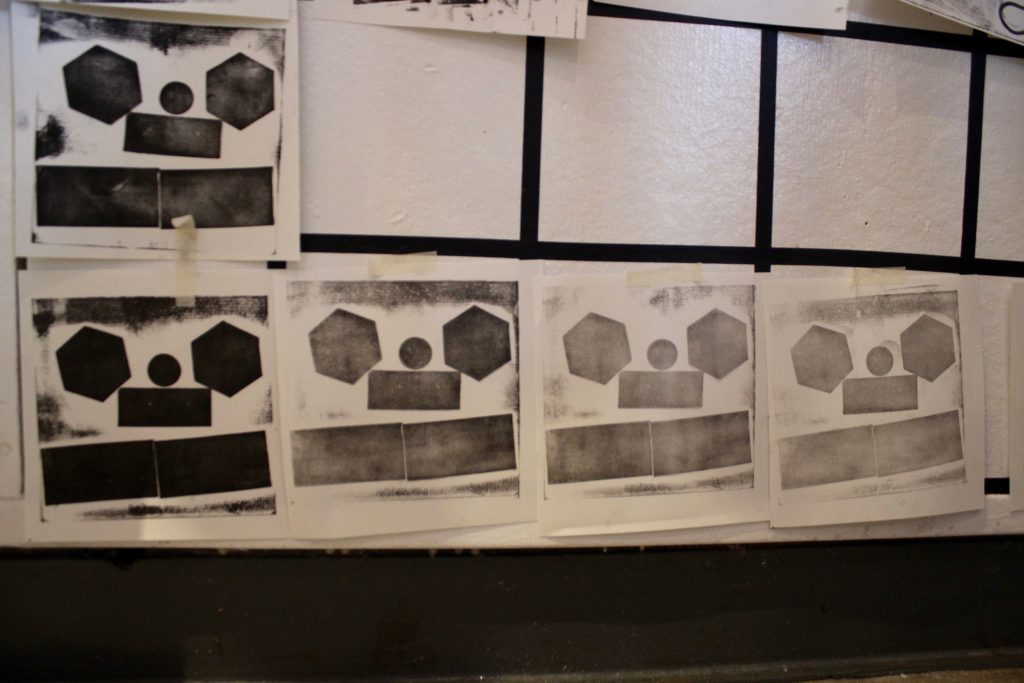
I need to do lots of ink to do nine.
It’s super dark.
It’s way lighter.
Three down, six to go.
So light.
So lighter.
From here all the way down to here.
Seven down, Two more to go.
From person to ghost.
Graeme looks down his line of prints. He has printed the same board again and again. Reusing the ink that remains, he creates ghosts.
